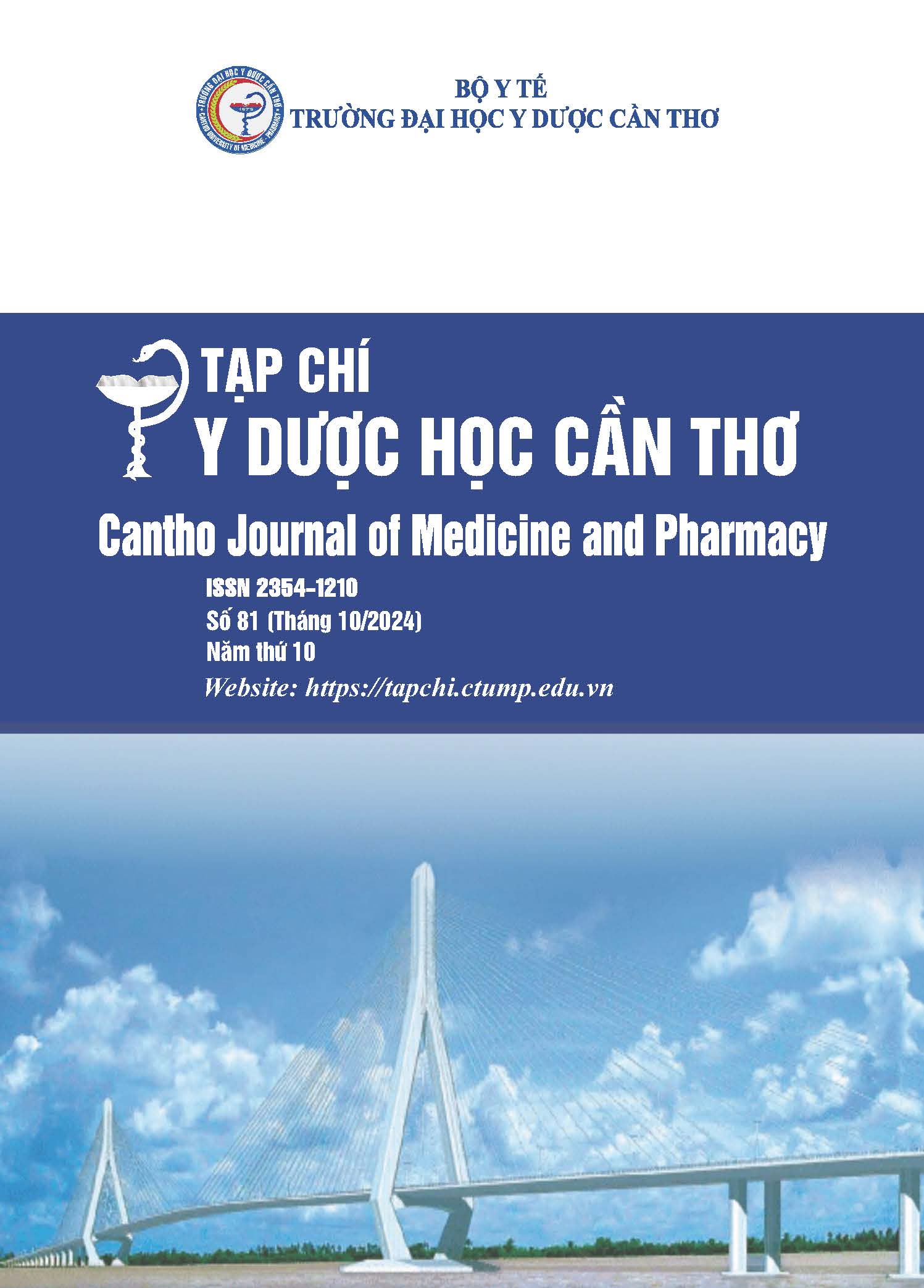CAUSES OF DIZZINESS AMONG PATIENTS TREATED AT CAN THO STROKE INTERNATIONAL SERVICES
Main Article Content
Abstract
Background: Dizziness is one of the common symptoms. Dizziness has many causes, usually divided into central or peripheral types but sometimes it is not clear. Objectives: To describe the causes of dizziness that cause patients to be hospitalized for treatment. Materials and methods: Retrospective study, cross-sectional description, survey of 833 dizziness patients hospitalized from 01/01/2023 to 30/06/2023 at Can Tho Stroke International Services. Results: There were more women than men with a female: male ratio = 2:1. The average age was 62.05 ± 5.03 years old. Percentage of patients undergoing brain MRI (88.23%). The highest rate was diagnosed with vestibular dysfunction (35.77%), followed by benign paroxysmal vertigo (26.17%) and posterior circulation cerebral infarction (18.50%). The diagnoses that accounted for a very small percentage was vestibular neuritis (0.24%) and vertigo of central origin (0.36%). Patients with dizziness had a cerebral vascular stenosis rate of 49.70%. The most damage to brain structure was in the pons (17.05%). The most narrowed cerebral blood vessel was the basilar artery (20.05%). Electrolyte disorders accounted for 27.61%. Conclusions: Our study evaluated 833 dizziness patients and showed that dizziness symptoms occur mainly in older people and women. This study also shows that peripheral causes of vertigo account for a high rate. However, there is still a significant proportion of dizziness patients with structural brain damage and cerebral vascular stenosis when examined by cranial imaging.
Article Details
Keywords
Causes of dizziness, peripheral vertigo, central vertigo
References
2. Hackenberg B, O'Brien K, Döge J, et al. Vertigo and its burden of disease -Results from a population-based cohort study. Laryngoscope Investig Otolaryngol. 2023. 8(6), 1624-1630, doi:10.1002/lio2.1169.
3. Lê Văn Minh. Giáo trình thần kinh học. Nhà xuất bản Y học. 2022.
4. Spiegel, R., Kirsch, M., Rosin, C., Rust, H., Baumann, T., et al. Dizziness in the emergency department: an update on diagnosis. Swiss medical weekly. 2017. 147, w14565, doi.org/10.4414/smw.2017.14565.
5. Zwergal A, Dieterich M. Vertigo and dizziness in the emergency room. Curr Opin Neurol. 2020, 33(1):117-125. doi:10.1097/WCO.0000000000000769
6. Kim SK, Kim JH, Jeon SS, Hong SM. Relationship between sleep quality and dizziness. PLoS One. 2018. 13(3), e0192705, doi:10.1371/journal.pone.0192705.
7. Pham Tiến Chương, Cao Phi Phong. Chóng mặt do nguyên nhân tổn thương thần kinh trung ương. Tạp chí Y học Thành phố Hồ Chí Minh. 2017. Tập 21, số 2, Trang 134-138.
8. Lý Ngọc Tú, Thạch Thị Ái Phương, Lâm Thị Ngọc Hiền, Cao Huỳnh Thiên Nhi, Trần Chí Lĩnh và cộng sự. Ứng dụng nghiệm pháp Epley trong điều trị chóng mặt tư thế kịch phát lành tính. Tạp chí Y Dược học Cần Thơ. 2023. số 60, trang 8 -15, doi.org/10.58490/ctump.2023i60.589.
9. Neuhauser HK. The epidemiology of dizziness and vertigo. Handb Clin Neurol. 2016. 137, 6782, doi:10.1016/B978-0-444-63437-5.00005-4.
10. Zhang XL, Zhang MJ, Liu DL, Zhang QF. Etiological characteristics analysis of 3 137 outpatients with vertigo or dizziness in ENT department. Journal of clinical otorhinolaryngology, head, and neck surgery. 2018. 32(10), 758–761, doi.org/10.13201/j.issn.1001-1781.2018.10.008.


